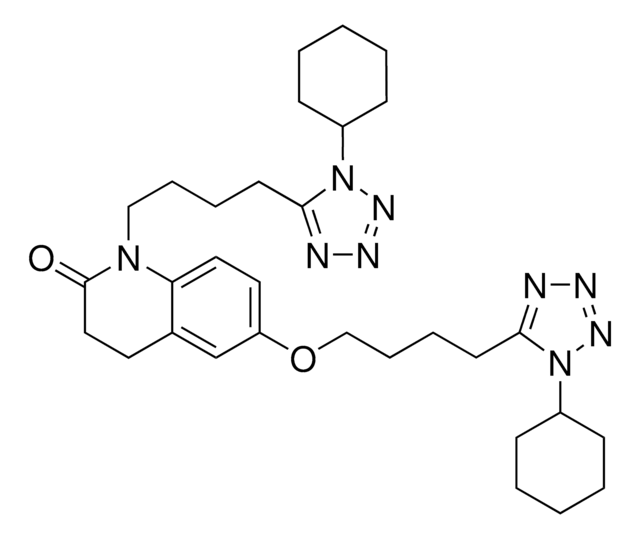50296
Melting point standard 47-49°C
analytical standard
Synonym(s):
Benzophenone, Diphenyl ketone, Diphenylmethanone, NSC 8077
About This Item
Recommended Products
grade
analytical standard
Quality Level
vapor pressure
1 mmHg ( 108 °C)
shelf life
limited shelf life, expiry date on the label
bp
305 °C (lit.)
mp
47-49 °C (±0.3°C)
47-51 °C (lit.)
application(s)
food and beverages
pharmaceutical
format
neat
SMILES string
O=C(C1=CC=CC=C1)C2=CC=CC=C2
InChI
1S/C13H10O/c14-13(11-7-3-1-4-8-11)12-9-5-2-6-10-12/h1-10H
InChI key
RWCCWEUUXYIKHB-UHFFFAOYSA-N
Looking for similar products? Visit Product Comparison Guide
General description
Application
Features and Benefits
- Traceable to primary standards from LGC, London
- Grade: Analytical Standard
- Melting point standardized in the thermodynamic mode of analysis
- Standard deviation up to ± 0.3 °C
- Available with certificates of analysis and safety data sheet
Signal Word
Danger
Hazard Statements
Precautionary Statements
Hazard Classifications
Aquatic Chronic 3 - Carc. 1B - STOT RE 2 Oral
Storage Class Code
6.1C - Combustible, acute toxic Cat.3 / toxic compounds or compounds which causing chronic effects
WGK
WGK 1
Flash Point(F)
280.4 °F - closed cup
Flash Point(C)
138 °C - closed cup
Personal Protective Equipment
Choose from one of the most recent versions:
Certificates of Analysis (COA)
Sorry, we don't have COAs for this product available online at this time.
If you need assistance, please contact Customer Support.
Already Own This Product?
Find documentation for the products that you have recently purchased in the Document Library.
Customers Also Viewed
Articles
Separation of Acetaminophen, meets USP testing specifications, 98.0-102.0%, powder; Caffeine, meets USP testing specifications, anhydrous; Benzoic acid, meets USP testing specifications; Aspirin, meets USP testing specifications
Our team of scientists has experience in all areas of research including Life Science, Material Science, Chemical Synthesis, Chromatography, Analytical and many others.
Contact Technical Service










